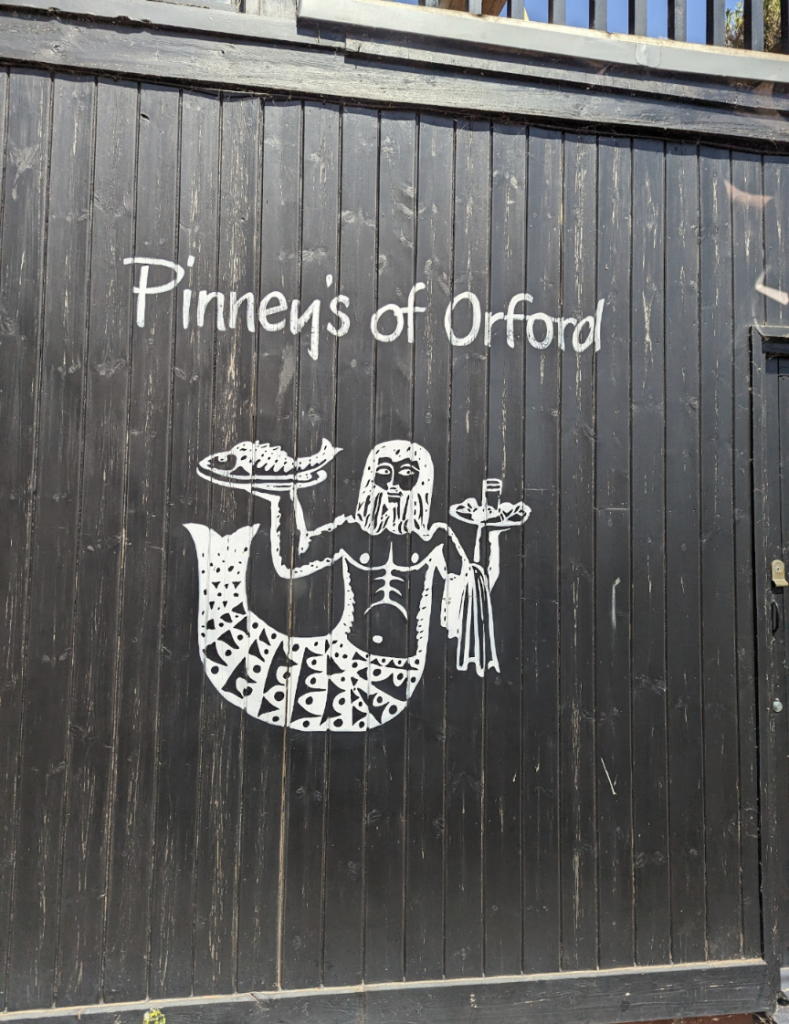Of all the creatures to roam the medieval and early modern imagination one above all others epitomised the wilderness in which it lived; representing the untamed world beyond both physical space and social conformity: the woodwose, or wild man. On their roving journey through the human consciousness the role of wild figures shifted dramatically over time, and in the borders of their wilderness can be discerned the anxieties and desires of the societies beyond their forests.

A typical representation of a wild man travelling in an animalistic manner
By the medieval period the concept of the woodwose had settled into a recognisable archetype found in both literature and art. The image of the medieval Woodwose was that of a hairy, bi-pedal, and distinctly humanoid creature. In carvings, tapestries, manuscript illustrations, and other visual mediums woodwose are shown to exhibit the behaviours, and physical features of both an animal and a human. Compounding this sense of a dualistic being are the areas of a wild man’s body devoid of hair: the face, hands and feet are nearly always shown to be bare, as are the breasts of female figures. These human traits serve to provide an observer with recognisable features of relatable humanoid characters, a reminder of the viewer’s potential similarity to these wild creatures. In contrast to the humanity suggested by their faces, many depictions of wild men show the elbows and knees as also devoid of hair, implying animalistic movement on all fours.[1]
[1] R. Bernheimer, Wildmen in the Middle Ages: A Study in Art, Sentiment, and Demonology (London, Oxford University Press: 1952).
These signifiers of bestial behaviour are important when considering the question of the wild man’s rationality. The assessment of a creature’s possession or lack of rationality and intellect was one method medieval people used define their relationship to animals. However, the specific qualities that delineate that divide, and the extent of an animal’s capacity to reason became the subject of philosophical debate. This identity crisis presents a question central to understanding the nature of the wild man. To further complicate questions of rationality and human behaviour depictions of wild men often feature a wooden club (the woodwose’s most iconic visual aspect aside from their fur) and rudimentary clothes fashioned from plant material. Intentionally crafted items of this nature contrast the beastlike image suggested by the wild man’s unkempt appearance and feral movements. These conflicting features complicate the designation of the wild man into a taxonomic category, fittingly thwarting any attempt to define the medieval wild man as either entirely a form of human, or a species of animal.
A real animal that can be seen to mirror the depiction of the fictional wild man is the bear. A staple of medieval bestiaries the bear is depicted as behaviourally similar to humans and is shown engaging in many human activities. The Aberdeen Bestiary, produced c. 1200, states that bears are known to stand upright, and “do not mate like other quadrupeds but embrace each other when they copulate, just like the couplings of humans”. The observation of human-like practice to understand and define a creature is also employed in relation to a wild man in Thomas of Cantimpré’s extensive natural history treatise Liber de natura rerum, produced c. 1230. The fourth book of the work, detailing the nature of a collection of quadruped animals, describes a hominis silvestres or ‘man of the forest’. This creature, described as a beast the size of a dog, was brought to the king of France; a description of the creature depicts it with an uneven covering of hair; while some areas were hairy, others (such as hands, arms, and legs) were bare.
Much like the bestiary descriptions of the bear this wild man stood upright, and “sat like a man”. It also “joined with girls and women most willingly” (although the willingness of the girls and women seems far less likely). The veracity of this account, or the true nature of the creature described within, is unknown. However, these passages show that similarity and imitation of human actions and activities were devices employed by the writers of bestiaries to define the creatures within, and aid in the delivery of moral messages to their readers. This concept is exemplified by another real animal that adorned the pages of bestiaries and other zoological texts, the simia, or ape. One of the earliest descriptions of the ape’s tendency for imitation of humans is found in the Natural History of Pliny the Elder, written c. AD 77.
They are described within as “marvellously cunning”, depicted playing draughts, and known to apply ointments and wear shoes after witnessing hunters miming these same actions. The work of Pliny the Elder can be seen repeated in bestiaries throughout the medieval period. These books included and expanded upon Pliny’s ideas of imitation, and brought religious and moral meaning to the creatures within. A common visual trope utilised by manuscript illustrators to compare humans with the creatures that imitate them is the depiction of those creatures performing human tasks. Apes are depicted riding camels, driving carts, and are frequently shown examining flasks of urine; an act imitating the practices of medieval physicians

An ape and a bear aping a human medical scene
Whilst other animals in manuscript illustrations are shown performing human acts (often fighting and jousting) these are nearly always marginalia, included to amuse. Whilst the imagery of apes undertaking typically human activities may seem as equally ridiculous as a jousting rabbit it was the deliberate choice of the illustrator to depict these activities in the miniatures dedicated to the ape, most often mirroring some evocative section of the textual description. The imagery accompanying these descriptions must therefore be understood as integral to the moral and allegorical religious instruction delivered by the bestiary.
The bear and ape, extant examples of partially human wild figures, exhibit in their imitations of humanity the form of imitation expected of all devout human inhabitants of medieval and early modern Christendom; the concept of Imitatio Christi. Discussed by early Christian theologians and continuing into modernity the imitation of Christ is seen an as aspirational practice within the Christian faith. By acting in a Christ-like manner it is believed that one may approach, or at least mimic, a higher form of spiritual being. The message for the medieval Christian is clear: just as the simia of bestiaries ape the actions of so-called higher beings by imitating human pursuits, humans should seek to imitate Christ, elevating themselves spiritually. In the face of the divine, bestiary writers suggest, the imperfect assemblage of humanity is compared to the semi-human creatures below them.
Although they did not exist alongside apes and bears, as an artistic and literary creation the medieval woodwose embodied the very real fears, beliefs, and tensions of those who depicted them. Works that featured the woodwose that were produced for an elite audience included an elite definition of what defined a person as wild. In the process of constructing for their audience an image of chaotic, dangerous, and supernaturally disordered creatures and places writers revealed their own fears about that which existed in their real environments. Dorothy Yamamoto calls attention to this in her analysis of Chrétien de Troyes’ c.1180 romance Yvain. The wild man figure in de Troyes’ work is a forest dwelling master of animals, known as the Giant Herdsman. Beyond the framing of the character as a herdsman de Troyes writes to his audiences’ apprehensions and revulsions when he describes the wild man as ugly, deformed, and black “like a smith”. Likening the Giant Herdsman in all his monstrosity to real professions held by those of lower status than his readership de Troyes is creating the distance necessary to fabricate a wild man. In the same manner that wild figures inhabit the strange, far reaches of the natural world, those at the bottom of society inhabited spaces and lived lives of measureable difference from Yvain’s audience. The presence of elite perceptions in the presentation of the wild man can also be found in the concept of the wilderness itself. By the medieval period very little of the natural environment was completely beyond the reach of civilisation. The forests most typically associated with the woodwose were, in reality, inhabited by those individuals on the periphery of medieval society. These marginal hunters, charcoal burners, criminals, and herdsmen (much like de Troyes’ wild man) would not have considered the forests and borderlands as mystical zones separate from society and humanity; instead the fabled home of the woodwose was a very real part of their lives. To the audience of works such as Yvain those who inhabited the wilderness out of social or economic necessity were real wild figures, far beyond the civilising power of the medieval society they inhabited.
A theme common to a multitude of wild figures throughout medieval literature is the transformational and impermanent nature of wildness. Linked to mental afflictions (diseases that were often understood to be penitential tests of faith) these onsets of wildness can be seen to affect literary figures in bouts, subsiding when the wild man in question has returned to faith and reason. The foundational figure of this interpretation of the wild man is the Babylonian King Nebuchadnezzar, a real individual who found a place in the Bible. Nebuchadnezzar, after being banished to the wilderness in a form of divine punishment, spent seven years crawling on all fours, neglecting his physical appearance and grazing like an animal. After this period of punishment ends he is allowed to return to civilisation, his wits and form returning to their previous human states. What is illuminating about the subsequent depictions of this story is the manner in which Nebuchadnezzar literally transforms into the archetypal medieval woodwose. The original biblical description sees him grow feathers and talons, certainly wild traits, but not the well-established visual signifiers of the wild man; it is in the later representations of medieval Europe that the King transforms before our eyes. In his first depictions he is merely a naked human man, by c.1000 the Roda Bible shows that his nails have grown to long claws, his hair trails around him like a horse’s mane, and he moves on all fours in an animalistic fashion. It is also at this stage that he is shown in the company of other beasts, furthering the link between his penitential madness and animal form. By the time of his portrayal in the Pamplona picture Bible in 1197 he is beginning to truly resemble the familiar form of the woodwose; the claws have vanished, and his mane has shifted to a coat of hair covering his entire body. The temporary periods of uncivilised behaviour exhibited in stories such as Nebuchadnezzar’s also demonstrate part of the appeal of woodwose and similar creatures to a medieval audience. The uncontrollable regression to a wild state, unaware of the pressures of civilised society, represents an ultimate form of catharsis; these wild figures offered escapist fantasies that (so long as the bout was followed by a return to the proper path) were not entirely damning. Wild men were also understood to be hyper-sexual creatures, liberated from restraint; this is one of many traits the woodwose inherits from its ancient literary ancestors, namely the satyrs of ancient Greek myth.
Woodwose are frequently conflated with satyrs in medieval bestiaries; this is most often due to the influence of ancient Greek and Roman writers on the medieval understanding of the natural world. Much of the writing of scholars such as Aesop, Aristotle, and Pliny the Elder was adapted and copied into later manuscripts. Satyrs share a number of features with the archetypal woodwose; they are partially hairy humanoids often with animalistic features, they are linked to the wilderness and nature, and share a kinship with beasts. The term satyr can also be found in manuscripts referencing apes, the word being used to describe a particular type of ape. The 13th century bestiary included in MS. Bodley 764 (which, like many medieval bestiaries, draws heavily from 7th century author Isidore of Seville using his etymology for simia, the Latin term for ape) lists satyrs alongside other apes. The text describes them as “hairy almost all over” and as “different from the others”, categorising them alongside real primates. They are also described as possessing beards, and only being able to live under the sky of Ethiopia. These and other links drawn to the mythological woodwose and satyrs demonstrate that the foundational bestiary writers, and those that adapted their work, derived some amount of their knowledge from descriptions of real apes and possibly even non-European humans. The origins of the wild man, be they from myth, encounters with unfamiliar species or peoples, or a mixture of both theories, has been debated for centuries. Increasing awareness of primates enabled late medieval and early modern thinkers to evaluate the history of their wild cultural figures. Even after the wild man fell from popularity 17th century works detailing the “pygmie” (in reality a chimpanzee) still depicted them standing, supported by the wild man’s wooden stick. Some postmodern studies of great apes bring their relationship to wild figures full circle. For centuries of discussion their great strength and hairy form marked the end of their similarity, but new appraisals of the intellectual and emotional capacity of these animals demonstrate them as possessing of culture, and as a close variation of human. Whilst these decidedly modern observations are not foundational to the wild man’s heritage (as can be said of the satyr or Nebuchadnezzar) this redefinition of human proximity to the other great apes provides a lens through which to view one of the earliest and most tangible inspirations for medieval and early modern wild figures.

Wild man, woman, and child from Jean Bourdichon’s four conditions of society
The evolution of the woodwose did not cease in the medieval period, and role they played in the following centuries saw a partial taming of the wild man; shifting from mythical embodiments of wilderness to romantic visions of a simpler existence, and foundational figures for existing European powers. With the re-emergence of classical approaches to the natural world, an increased exploitation of the remoter areas of the human sphere of occupation, a dissolving of medieval social structure, and growing urbanisation the woodwose underwent a form of redemption. A figure that was before the focus of fears (with any envy of their liberation being a private matter) became a figure to be admired, a symbol of freedom from conformity or social order, and an icon of a vanishing world. Humanization of the once inhuman wild man can be seen in a miniature by the 15th-16th century painter Jean Bourdichon.
Part of a set of four miniatures depicting the four conditions of society the painting shows the wild state; whilst the almost non-existent comforts of the dwelling may seem stark and unappealing when compared to Bourdichon’s painting of poverty the scene takes on idyllic quality. The couple depicted seem content, the shaped cave entrance and small stream that is their dwelling is romantically compared to the rising castle and moat in the background. Whilst free from the convention of clothing the pair maintain the expected familial dynamic, and the hair of both figures is neat and styled. These civilised wild figures are visually far removed from the shaggy, animalistic brutes of medieval manuscripts, and their family structure is a far cry from the lone and sexually aggressive nature of their predecessor. An instance of re-merging classical works altering the perception of the wild man can be found in the imagery associated with German ethnic identity in the 15th and 16th centuries. Germania, a first century ethnographic study by the Roman historian and politician Tacitus was introduced to German humanists c.1473. Within was a description of the Germani, depicting their customs and differences to the Romans. In combination with emerging humanist study into German heritage the woodwose was propelled to the forefront of the debate on identity. This reimagining of the history of the German people even altered existing historical figures, with images of Charlemagne depicting him in a moderately wild manner; this depiction does not stray into the legitimately uncivilised territory of earlier wild figures, but instead portrays Charlemagne in the modest style of later woodwose.
The pervasive appeal of wild figures, from ravening beasts to idyllic forebears, continues into modernity. The cave dwelling and club wielding stock character of the caveman is one more recent branch of the woodwose family tree, speaking to the compelling versatility of proto-human figures in literature and art.
The North American cryptozoological interest in Bigfoot, or the Sasquatch, feels much like a continuation of the tensions inlaid within renaissance wild figures; a semi-human creature in an increasingly human world, and a reassurance that wild spaces still exist on a progressively inhabited earth. Other wild men remain almost unchanged, preserved in local folklore; one such figure is recorded by the English chronicler Ralph of Coggeshall. During the reign of Henry II fishermen near Orford castle in Suffolk dredged a creature from the sea, a naked humanoid being with the appearance of a man, a bushy beard, and a covering of shaggy hair. This figure was imprisoned within the castle, fed on a diet of raw fish, and tortured in an effort to determine its nature. Despite the torment the creature remained non-verbal, and unyielding to the investigations of its jailors. During an excursion to the sea this mysterious individual submerged themselves, and escaped their captors. Whilst the true nature of these events are certain to be far less fantastical than presented in the chronicle the wild man depicted remains pertinently characteristic of his literary brethren; indefinable, elusive, and eminently compelling. The wild man’s legacy is clear to any who visit the village beside the castle. Nearly nine centuries after he slipped beneath the waves he remains, painted on the doors of a local fishmonger, on a road beside the sea.
Post by Robert Newby, a Medieval and Early Modern Studies graduate with a love for the creatures found within medieval bestiaries.

Modern depiction of the Orford wild man, complete with shaggy hair and the tail of a fish


